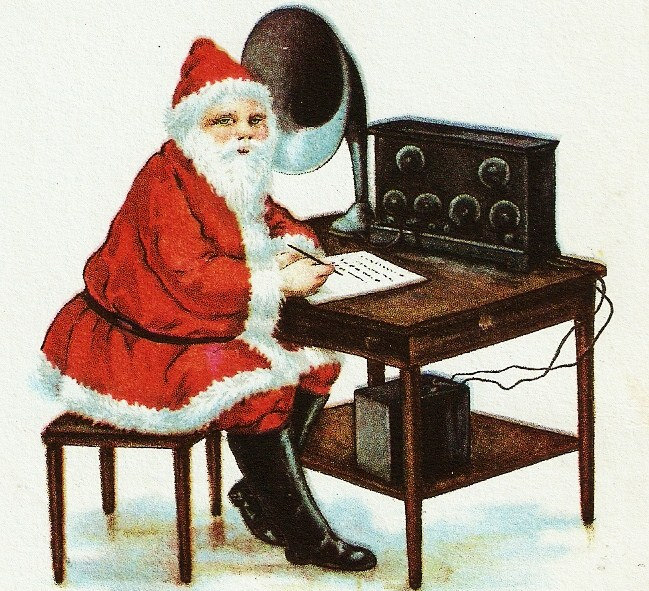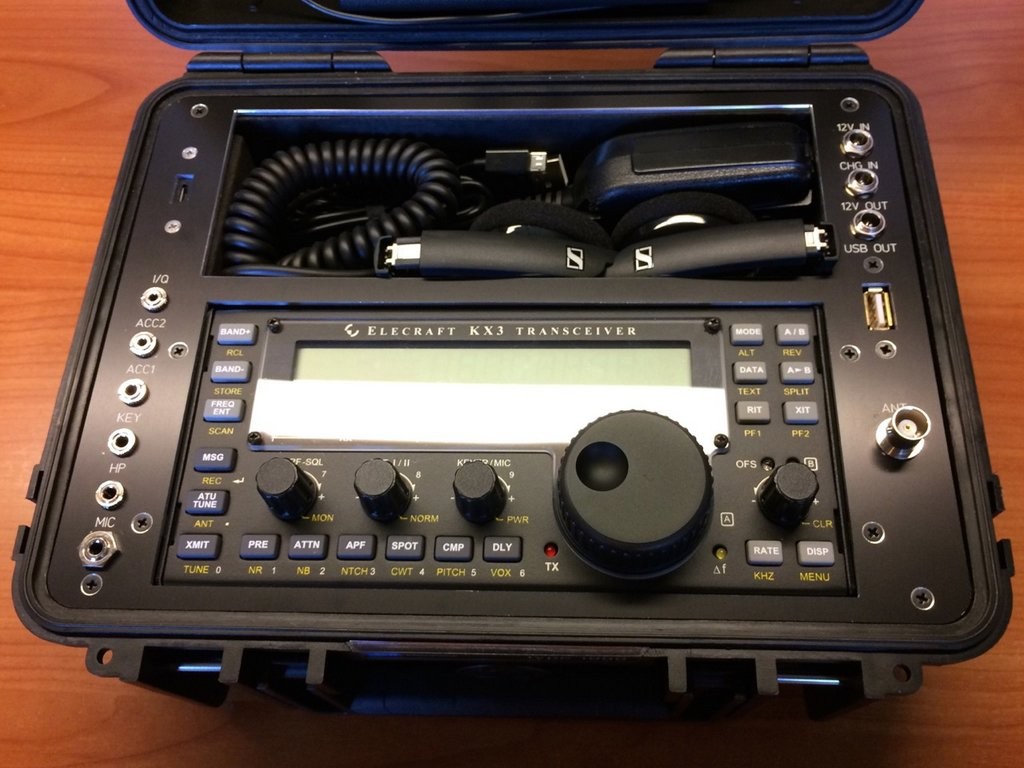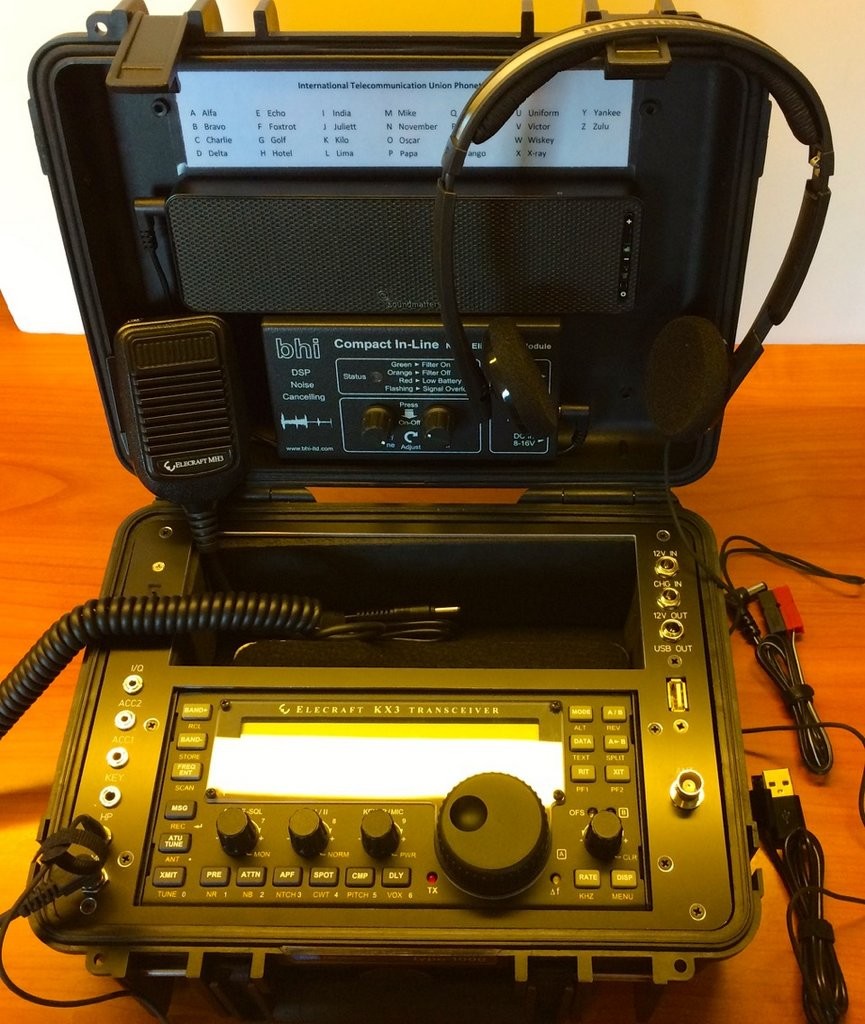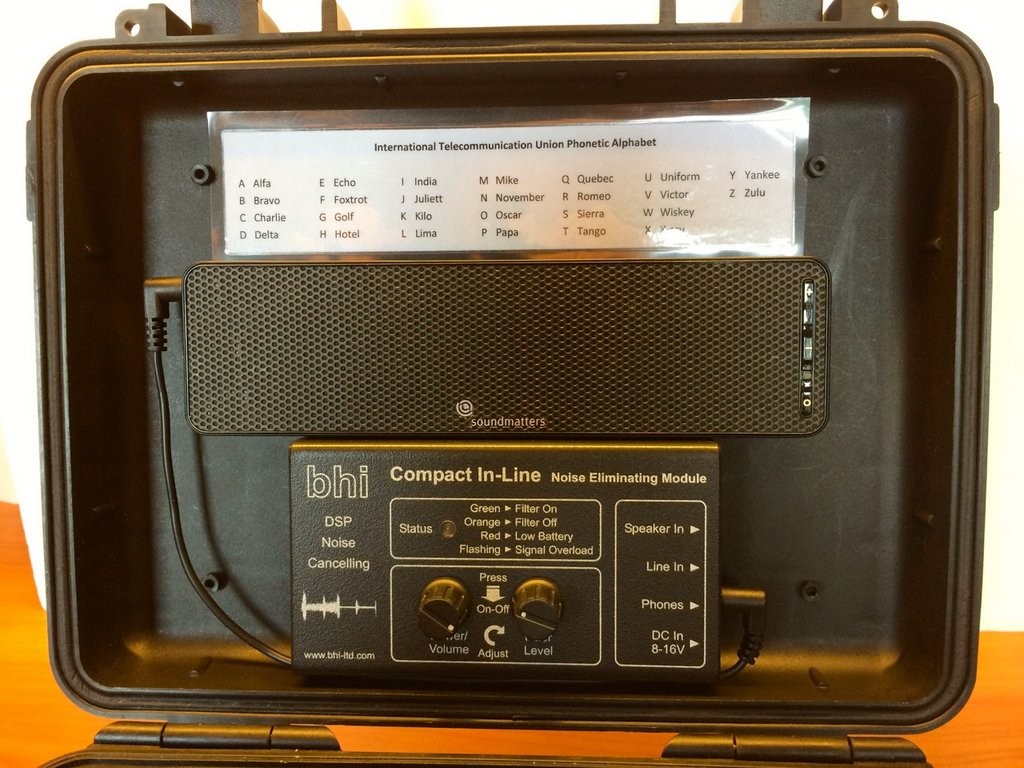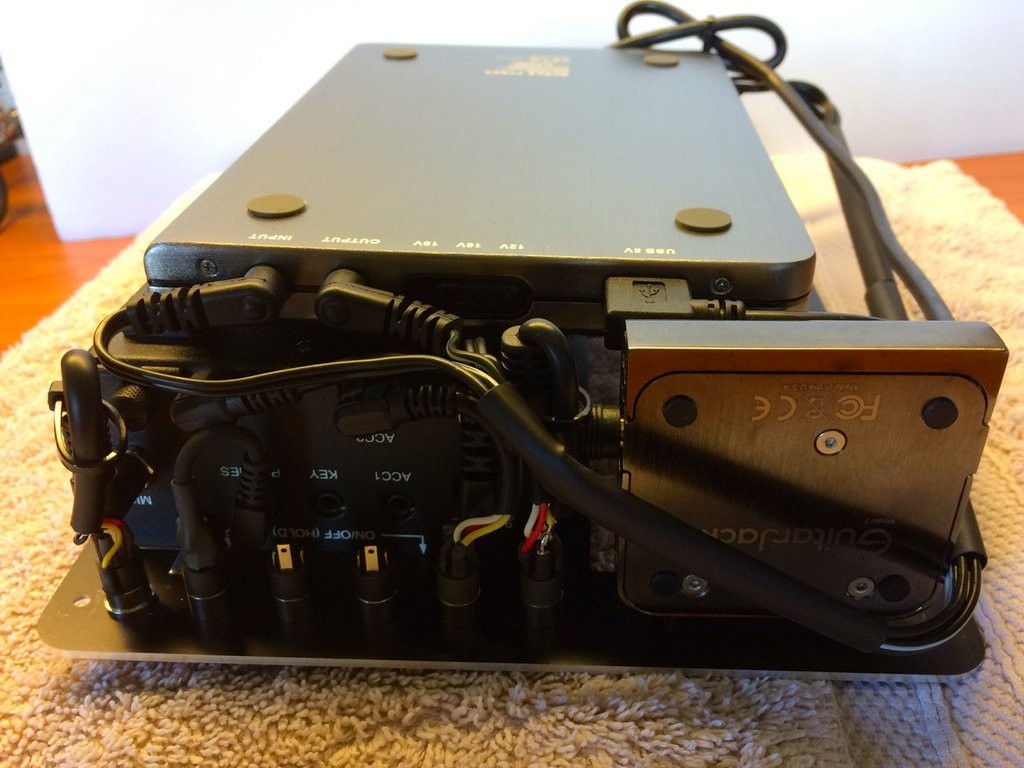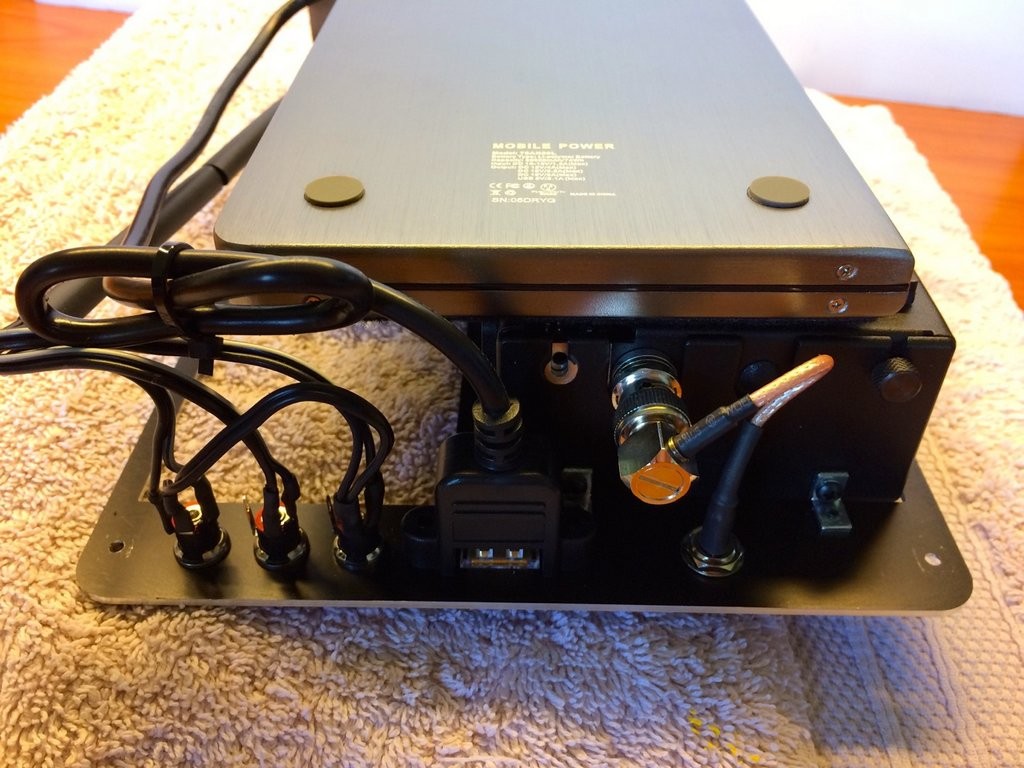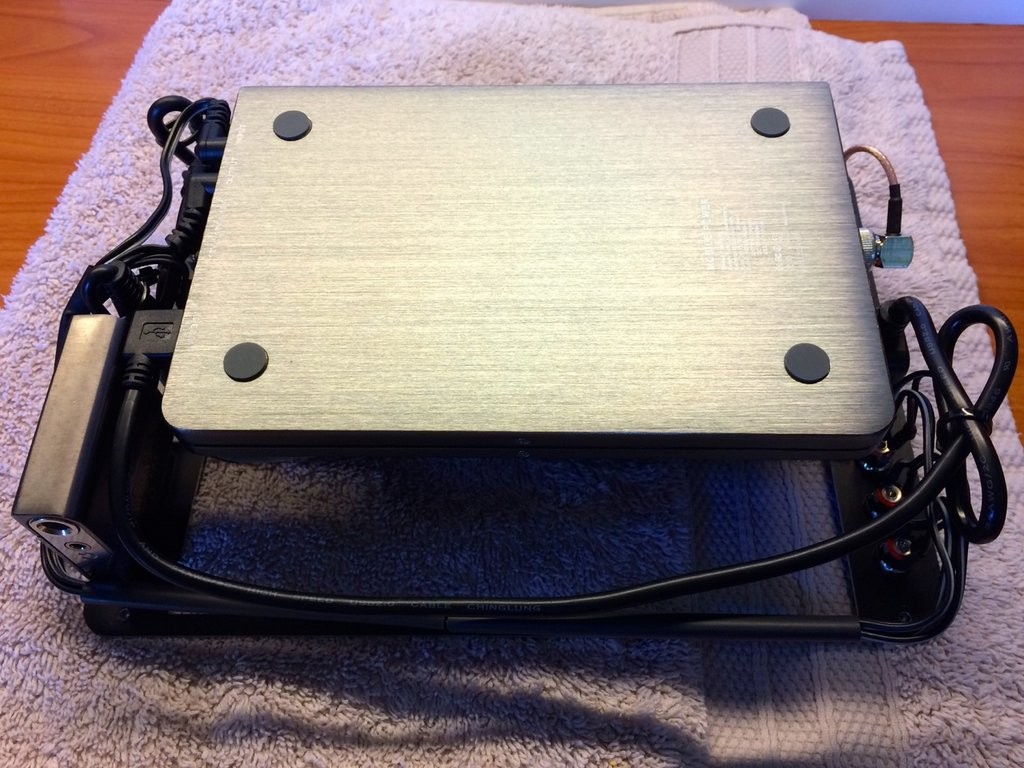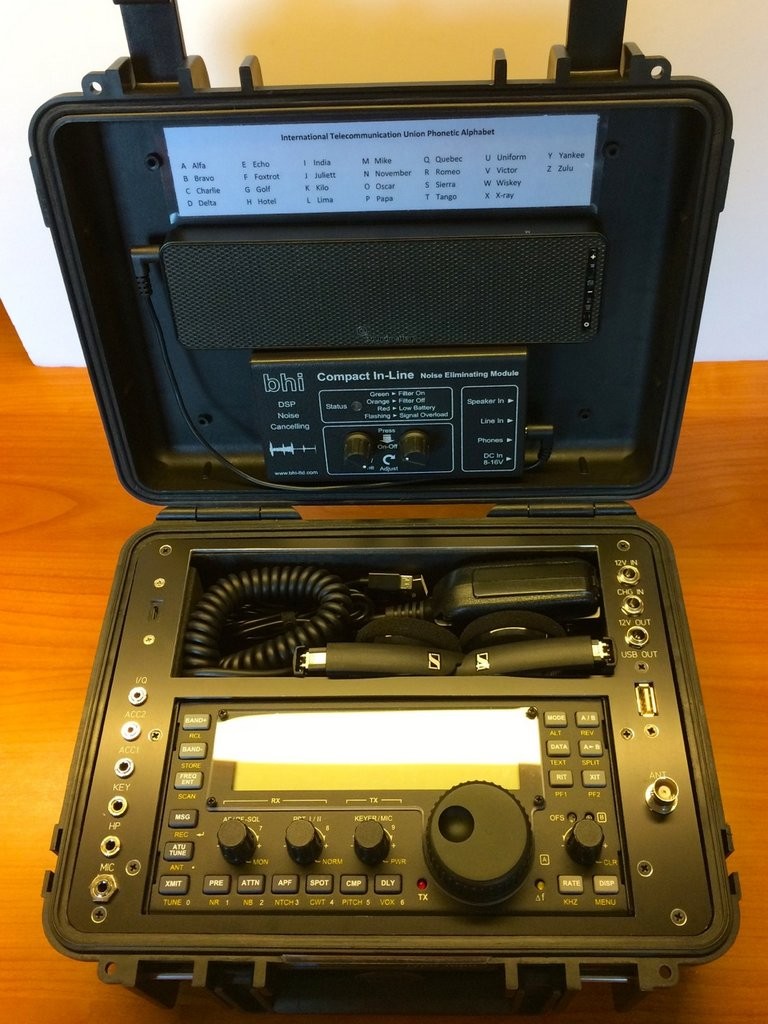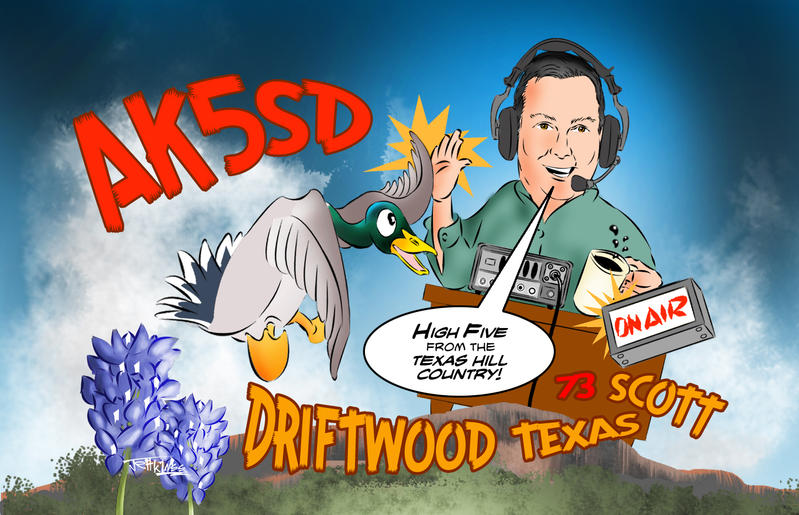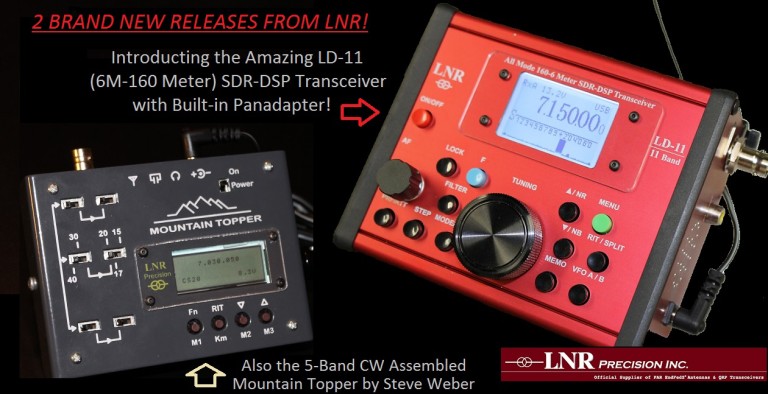
LNR Precision announced two new QRP transceivers this weekend: the MTR5B and LD-11. Below, you can find details I pulled from LNR’s press release and website for both units:

The LD-11
The LD-11 is a new 11-band QRP transceiver based on the LNR’s LD-5 transceiver. The LD-11 covers from the 6 meter band down to the 160 meter band. A new feature on this model is a built-in panadapter. AM/FM/SSB and CW modes are all included.
Here is the description from LNR’s website:
The new LD-11 is Digital Direct Conversion, SDR type, build-in CPU (SM32a) DSP radio in which RF signals are directly converted to a digital data via differential and balanced A/D converters. This enables direct sampling with extremely low phase and floor noise.
The DSP is unique and features two independent channels. It also employs a unique differential algorithm within the software which is applied for IQ processing of the channels with phase suppression of the unwanted side-band channel.
The balanced ADC and DAC gives additional noise floor reduction and the receiver can handle interfering signals that are 100 dB stronger than the desired signal at a frequency separation of 10 kHz, and is about 130 dB stronger at 50 kHz separation. As the receiver and transmitter are using the same DSP channel, there is no gap between the receiver performance and the transmitter performance. Thus, there is a clean neighborhood on the bands. At the development stage, our intentions were motivated by the TX side-band noise of existing SDR manufacturers, so our aim was to fully equalize our transmitter to have noise performance that is compatible with the best modern receivers, or even better. After a arduous year of development , we think we achieved it!
This 11+ band radio is based on the LD-5, which has proven to be one of the most exciting QRP transceivers introduced in the last few years. Quite frankly, the performance rivals high end units offered by other manufactures at a much lower price point. Our motto is that we make QRP transceivers that you will want to take out in the field (without fear of breaking the bank).
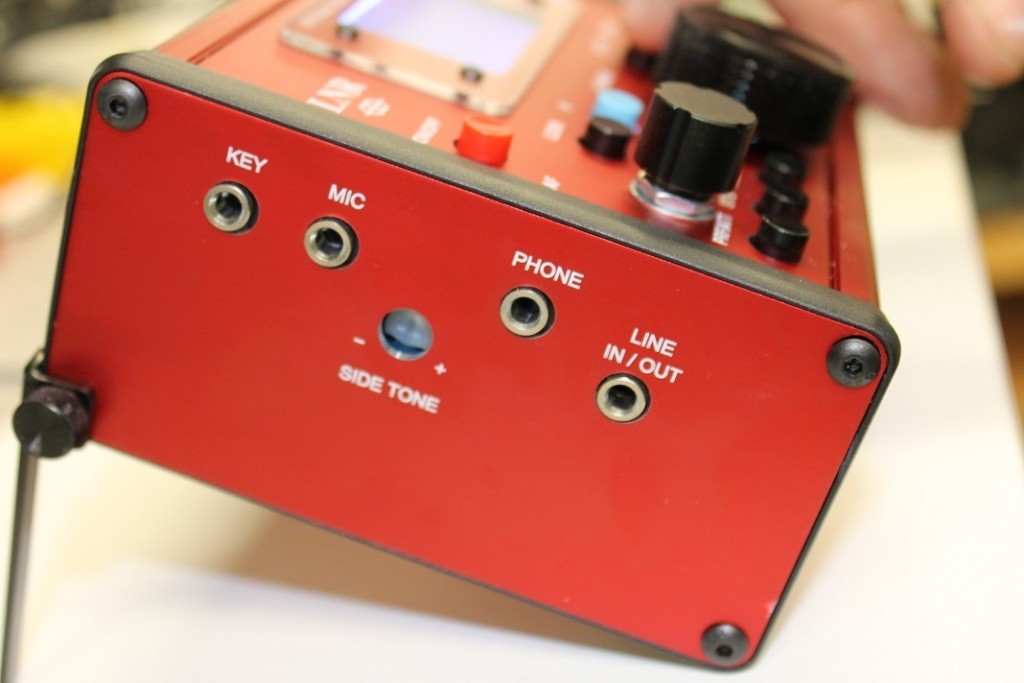
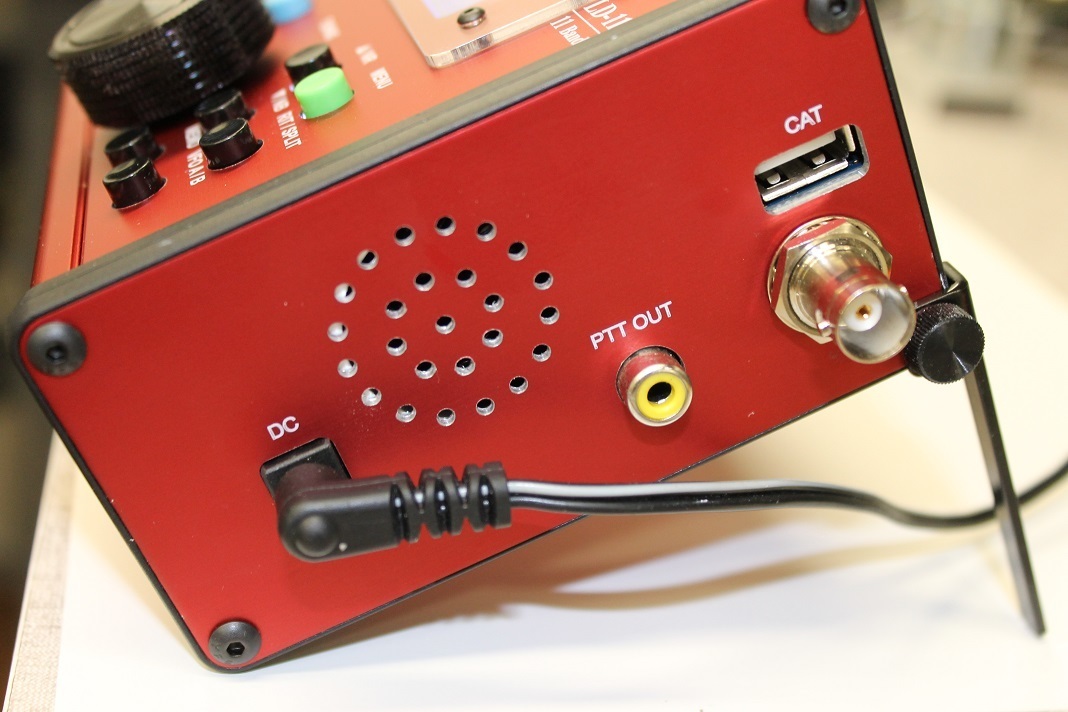
Note: Larry Draughn (AE4LD), President of LNR Precision, will be issuing an LD-11 transceiver to me on loan for review. I’m looking forward to putting it on the air.
What fascinates me about the LD-11 is that, although it’s designed as a ham band-only transceiver, the band edges of the 30 meter ham band can be expanded to include the full 31 meter broadcast band. There are, perhaps, other ham bands that can include nearby broadcast bands as well. I will plan to experiment with the band edges.
The MTR5B
The new MTR5B 5-Band Mountain Topper is a fully-assembled 5-band CW transceiver KD1JV designs “Steve Weber” kit. The following are specifications/features from the LNR website:
40M, 30M, 20M, 17M, 15M
Size: 4.337″L x 3.153″W x 1.008″T
Weight: approx 6.4 OZ.
Features:
- Switch selected 40/30/20/17/15 meter bands (no band modules to lose or change out)
- Wide operating voltage range, 6 to 12 volts 15 ma Rx current at 12V supply
- Efficient transmitter. Low current with 4W output
- LCD display
- Push button or Optional rotary tuning
- 24 hour clock built in, with battery back up
- Three 63 character programmable message memories
- Message beacon mode with adjustable pause time
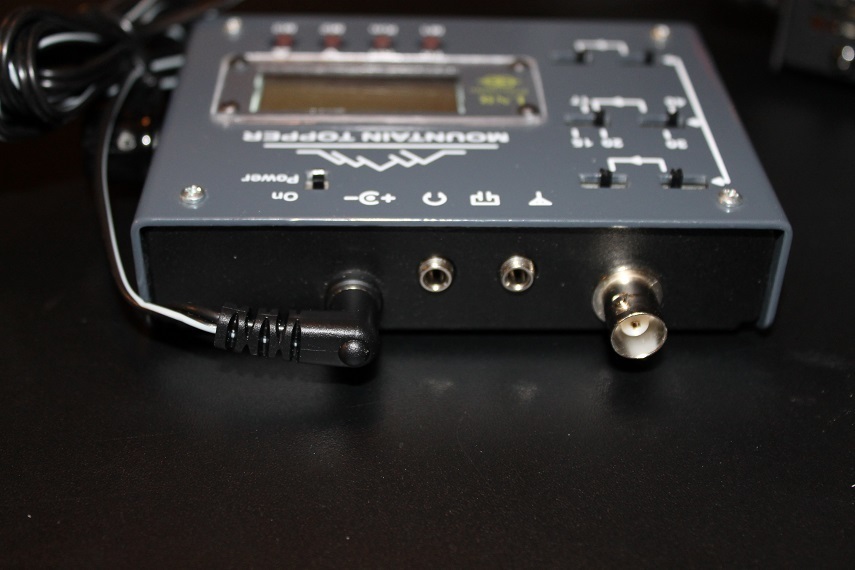
Steve Weber’s QRP transceivers are amazing and incredibly portable. His MTR-3B trail radio has received very favorable reviews over the past year; I expect the same from the new MTR-5B.
If you were lucky enough to grab a first production unit of either of these radios, I would love to post your overview/review! I’m looking forward to checking out the LD-11 soon. I’ll post updates with the tag: LD-11

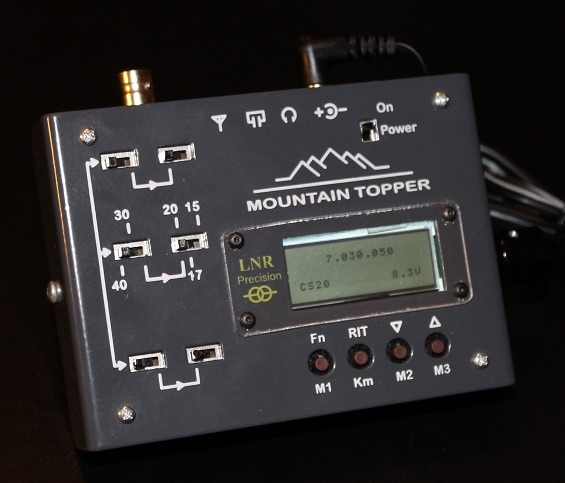



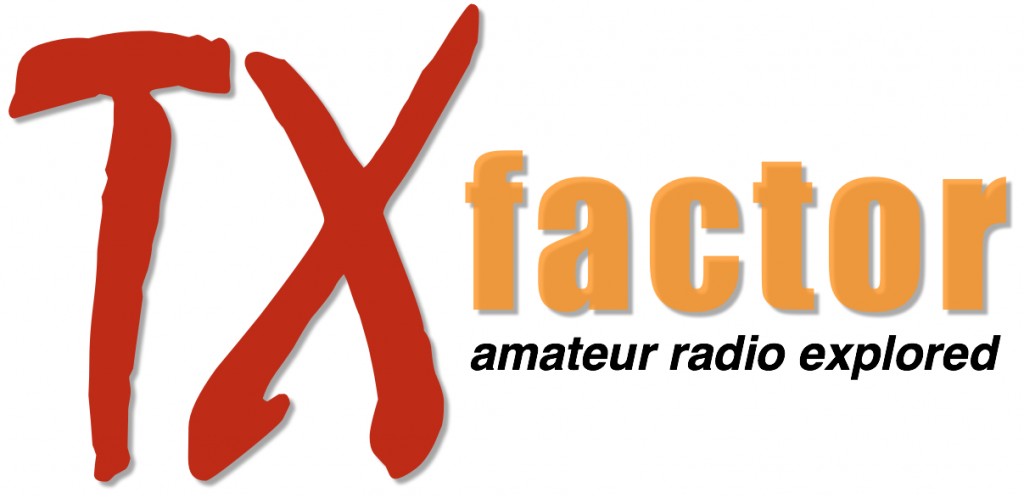
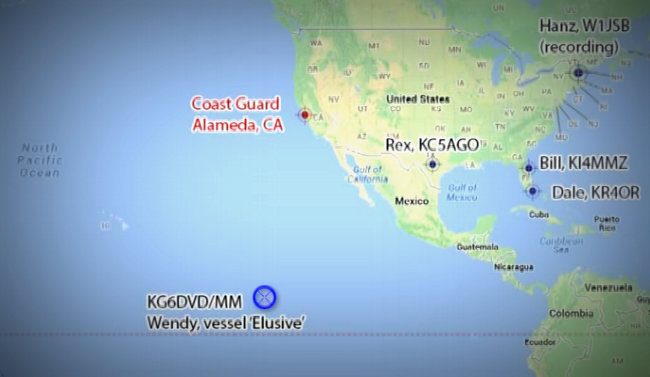
 (Source:
(Source: 